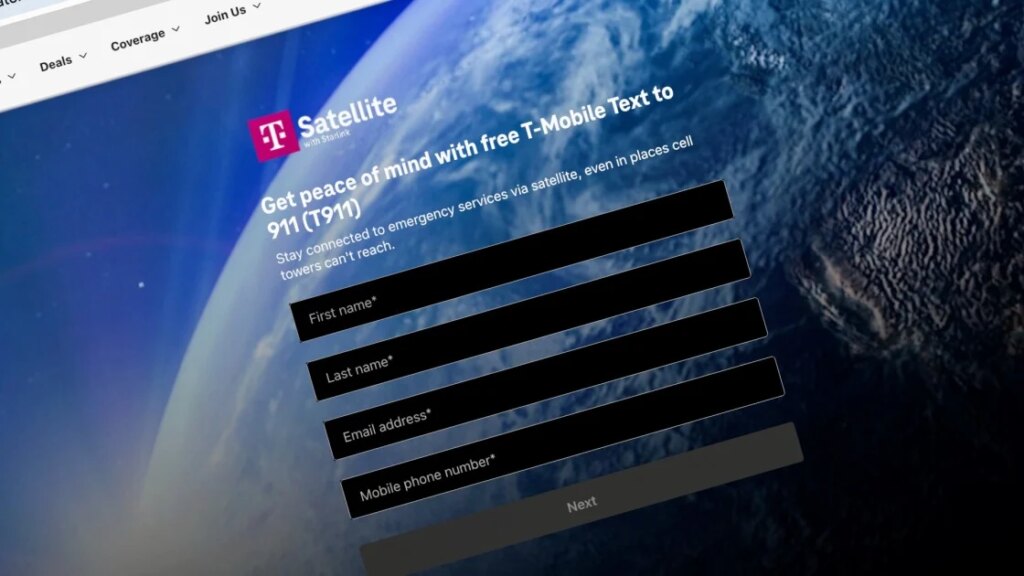Don’t miss out on our latest stories. Add PCMag as a preferred source on Google.
T-Mobile is offering free 911 texting via its cellular Starlink system, even to those on rival carriers.
“Because emergencies don’t care who your wireless provider is, T-Mobile is making sure 911 access is available to as many people as possible,” the carrier says.
The service, which T-Mobile first teased in June, is designed to fill the void for users who lack satellite-powered emergency texting on their phones. So, this means T-Mobile isn’t rolling out access to certain models—including the iPhone 14 and later, as well as the Google Pixel 9 and Pixel 10—because these phones already have satellite-emergency texting features through Globalstar and Skylo, to which T-Mobile will “automatically” defer.
(Credit: T-Mobile)
As a result, the free offering is poised to mainly benefit compatible Samsung and Motorola phones, although Apple’s iPhone 13 can also receive access. The other catch is that eligible users must sign up for the free service, which requires providing some sensitive information and granting T-Mobile permission to contact them.
For example, the sign-up page requires you to submit your name, email address, and phone number. T-Mobile will also request your phone’s IMEI number to determine if the device is compatible. If it qualifies, the carrier will then ask you to enter your date of birth and residential address, which T-Mobile says “first responders can use.”
(Credit: PCMag)
You’ll then need to set a security PIN and agree to allow T-Mobile to contact you, including on weekends and holidays, about your order. If you approve, the carrier will send your phone a digital eSIM, which you can quickly install. That gives you access while enrolling you into a T-Mobile account with a phone number.
The additional eSIM for T-Mobile is meant to “automatically connect to the T-911 network when no other coverage is available,” the carrier wrote in a support page.
“If you ever need to reach 911 while in a remote location, it’s just as simple as sending a normal message: open your texting app, type your message, enter 911 in the phone number field, and hit send,” T-Mobile added.
Recommended by Our Editors
(Credit: T-Mobile)
The technology taps SpaceX’s cellular Starlink, which uses over 650 orbiting satellites to beam connectivity to phones if they ever enter a dead zone. T-Mobile officially launched the service in July for $10 per month for most users (including those on rival carriers), giving people a way to receive satellite data for messaging, mobile apps, and even video calls.
The carrier has been using this T-Satellite service to help it stand out from the competition. We also wonder if the free satellite 911 texting might be a Trojan horse for T-Mobile to pull customers from rival carriers, similar to its initial free beta for T-Satellite earlier this year.
However, both AT&T and Verizon are working on their own satellite services through AST SpaceMobile and Skylo, although it could take many more months before AST’s technology comes online.
Get Our Best Stories!
A Smart, Bold Take on the Wireless World
Sign up for the Fully Mobilized newsletter to get our top mobile stories delivered right to your inbox.
Sign up for the Fully Mobilized newsletter to get our top mobile stories delivered right to your inbox.
By clicking Sign Me Up, you confirm you are 16+ and agree to our Terms of Use and Privacy Policy.
Thanks for signing up!
Your subscription has been confirmed. Keep an eye on your inbox!
About Our Expert
Michael Kan
Senior Reporter
Experience
I’ve been a journalist for over 15 years. I got my start as a schools and cities reporter in Kansas City and joined PCMag in 2017, where I cover satellite internet services, cybersecurity, PC hardware, and more. I’m currently based in San Francisco, but previously spent over five years in China, covering the country’s technology sector.
Since 2020, I’ve covered the launch and explosive growth of SpaceX’s Starlink satellite internet service, writing 600+ stories on availability and feature launches, but also the regulatory battles over the expansion of satellite constellations, fights with rival providers like AST SpaceMobile and Amazon, and the effort to expand into satellite-based mobile service. I’ve combed through FCC filings for the latest news and driven to remote corners of California to test Starlink’s cellular service.
I also cover cyber threats, from ransomware gangs to the emergence of AI-based malware. Earlier this year, the FTC forced Avast to pay consumers $16.5 million for secretly harvesting and selling their personal information to third-party clients, as revealed in my joint investigation with Motherboard.
I also cover the PC graphics card market. Pandemic-era shortages led me to camp out in front of a Best Buy to get an RTX 3000. I’m now following how President Trump’s tariffs will affect the industry. I’m always eager to learn more, so please jump in the comments with feedback and send me tips.
Read Full Bio

